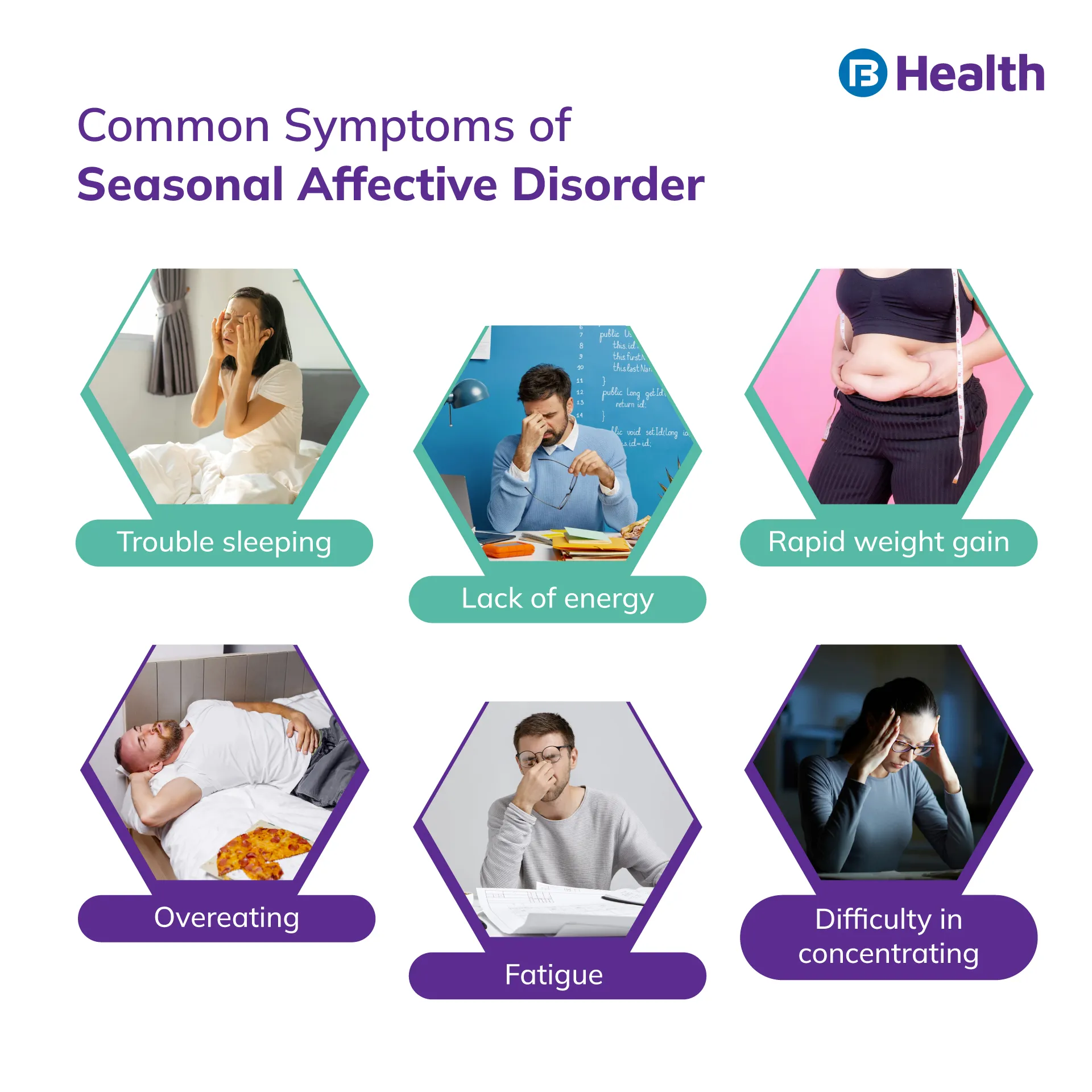Psychiatrist | 4 min read
Seasonal Affective Disorder: 6 Helpful Tips to Manage It
Medically reviewed by
Table of Content
Key Takeaways
- Seasonal affective disorder affects nearly 0.5-3% of the general population
- Symptoms of seasonal depression include fatigue, lack of interest, weight gain
- Sunlight and physical activity can help you manage mental illness symptoms
Seasonal affective disorder, also known as SAD, is a type of depression caused by the changes in season. The symptoms of seasonal depression usually begin to appear around fall or winter and stay for about 3-4 months. SAD is a subtype of bipolar disorder and major depressive disorder (MDD) which affects around 0.5 - 3% of the general population. But its prevalence is high in those who are already diagnosed with a mental health condition. SAD affects nearly 10-20% of the people with MDD and around 25% of the people with bipolar disorder [1].
Two of the main causes for SAD include lack of sunlight exposure and inability to adjust to the seasonal changes. To manage and ease seasonal affective disorder, you need to first identify the symptoms. These mental illness symptoms include fatigue, lack of interest, lack of energy, and trouble in sleeping. After you identify the symptoms, you can start taking measures that help you ease them. This in turn will help you better manage seasonal depression. Read on to know about the top 6 tips you can try to manage seasonal affective disorder.
Additional Read: Seasonal DepressionLet sunlight enter your home
One of the major causes of seasonal depression is lack of sun exposure with in turn can cause vitamin D deficiency. This makes it important that bask in as much sunlight as possible during the day. You can go for a stroll at a time when the sunlight is tolerable. It can help you better manage seasonal depression.
If you stay mostly indoors, be sure to let natural sunlight enter your home. Also make sure to use sunscreen to protect yourself from the UV rays.
Use dawn stimulators and light therapy box
Dawn stimulators are alarm clocks which gradually emit light just like the sun instead of loud music or noise. Using dawn stimulators are an effective treatment for manage seasonal affective disorder [2].
Light therapy boxes are electric boxes that emit light mimicking the sunlight. Exposure to this type of artificial light can help you keep your circadian rhythm on track. You may have to sit in front of the box for about 20-30 minutes which can lead to a chemical change in your body. This chemical change can help boost your mood and alleviate mental illness symptoms.

Take a break
One of the ways you can manage seasonal affective disorder is by taking a break and going on a vacation. When you escape overcast, cold skies, or summer heat, it can help uplift your mood. You can also try a staycation where you take time off from work and try new things within your home and community.
If longer holidays are not a feasible option for you, you can try taking a short break between your daily tasks. A change of pace can help you feel better about yourself and boost your mental health. It can also help you recharge yourself for the coming days.
Be more social
If you have seasonal affective disorder, you can try including more social activities in your schedule. This will help you better manage your symptoms and take better care of your mental health. You can opt for different ways to connect with people who are close to you. Apart from that, you can also try the following social activities:
- Go for a walk or a jog
- Visit the local park
- Play outdoor or indoor games

Increase physical activity
Like other forms of depression or mental illness, you can increase your physical activities to manage seasonal affective disorder. Being more active can also help you offset weight gain that is often common in SAD. You can start by including small workout sessions in your routine.
If the weather is not favorable to go outside or you don’t feel like it, try doing it indoors. You can have a stationary bike, treadmill, or an elliptical machine. Be sure to put your equipment near a window so that you can enjoy some sunshine too.
Additional Read: Effective Relaxation TechniquesStart preparing in advance
When you prepare your mind before winter or summer kicks in, you can better adjust to the seasonal changes. In this way, you can bring small changes in your schedule to suit the season. Set aside time for activities that uplift your mood and practice them daily to feel better.
After all these, if you notice that your seasonal depression symptoms are persistent or getting worse, talk to a doctor immediately. They can help you understand your mind and show you the path to wellness. You can book doctor consultation on Bajaj Finserv Health in minutes and talk to experienced professionals. This way, with the guidance of experts, you can beat SAD and take steps towards a better mental health.
References
- https://medlineplus.gov/genetics/condition/seasonal-affective-disorder/#frequency
- https://pubmed.ncbi.nlm.nih.gov/25885065/
Disclaimer
Please note that this article is solely meant for informational purposes and Bajaj Finserv Health Limited (“BFHL”) does not shoulder any responsibility of the views/advice/information expressed/given by the writer/reviewer/originator. This article should not be considered as a substitute for any medical advice, diagnosis or treatment. Always consult with your trusted physician/qualified healthcare professional to evaluate your medical condition. The above article has been reviewed by a qualified doctor and BFHL is not responsible for any damages for any information or services provided by any third party.




